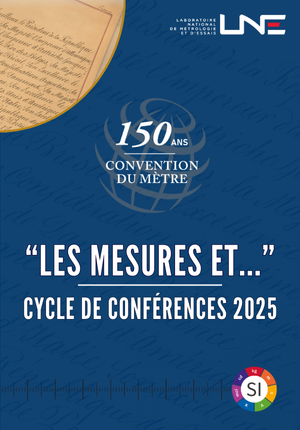Synthèse et spectroscopie optique de semi-conducteurs à double perovskites sans plomb prometteurs pour l'application photovoltaïque // Synthesis and optical spectroscopy of promising lead free double perovskites semiconductors for photovoltaic application
|
ABG-131618
ADUM-64826 |
Thesis topic | |
| 2025-05-01 |
Université Paris-Saclay GS Sciences de l'ingénierie et des systèmes
Gif-Sur-Yvette Cedex - Ile-de-France - France
Synthèse et spectroscopie optique de semi-conducteurs à double perovskites sans plomb prometteurs pour l'application photovoltaïque // Synthesis and optical spectroscopy of promising lead free double perovskites semiconductors for photovoltaic application
Double Pérovskites sans Plomb, spectroscopie optique, Photovoltaïque, excitons, photoluminescence, matériaux
Lead free Double Perovskites, optical spectroscopy, photovoltaic cells, excitons, photoluminescence, materials
Lead free Double Perovskites, optical spectroscopy, photovoltaic cells, excitons, photoluminescence, materials
Topic description
Le travail sera consacré à la synthèse de matériaux double pérovskite prometteurs et sans plomb, ainsi qu'à leur intégration dans des dispositifs photovoltaïques.
Au cours de la dernière décennie, les pérovskites halogénées ont démontré leur potentiel en tant que matériaux pour les applications photovoltaïques en couches minces. Cependant, ces matériaux contiennent généralement du plomb et présentent des problèmes de stabilité à long terme. Dans ce contexte, nos équipes étudient une nouvelle famille de semi-conducteurs double pérovskite sans plomb, basée sur des formes oxydées d'or, d'argent, de césium, de type Cs₂Agₓ⁺Au₁₋ₓ⁺M³⁺X₆ (avec M = Au, Ir, Bi, Eu, …), qui sont plus stables et moins toxiques [1]. Dans ce cadre, en collaboration avec les équipes de l'IPVF, nous avons récemment synthétisé des monocristaux de semi-conducteurs double pérovskite sans plomb à base de Cs₂AgBi₀,₉₅Ir₀,₀₅Br₆ (Figure 2a) et de Cs₂Au⁺Au³⁺Cl₆ (Figure 2b), ce dernier présentant un gap optimal pour les applications photovoltaïques. En 2023, un groupe a publié (dans Nature Chemistry) une composition similaire. Leurs travaux ont démontré que ces matériaux étaient de bons candidats pour les applications photovoltaïques grâce à une énergie de gap plus faible que celle des pérovskites classiques à base de plomb [2]. L'équipe de collaboration entre le LUMIN, le LPS et l'IPVF recherche des candidat(e)s motivé(e)s, avec un fort intérêt pour les nanomatériaux et les semi-conducteurs, tant du point de vue fondamental qu'applicatif.
Dans ce projet de thèse, une première partie du travail sera dédiée à la synthèse de ces matériaux sous deux formes présentant un fort intérêt pour l'obtention des meilleures propriétés cristallines et optiques : les monocristaux et les points quantiques/nanocristaux. Pour cela, le/la candidat(e) bénéficiera de notre expertise développée dans le contrôle de la cristallisation, notamment pour l'obtention de monocristaux [3], de nanocristaux de pérovskites au plomb [4], et de nanoparticules d'or fonctionnalisées par des ligands [5]. Une seconde partie du travail portera sur la fabrication de cellules photovoltaïques et leur caractérisation optique, en s'appuyant sur les plateformes des groupes de l'IPVF et du LPS.
------------------------------------------------------------------------------------------------------------------------------------------------------------------------
------------------------------------------------------------------------------------------------------------------------------------------------------------------------
The work will be dedicated to synthesize of lead free promising double perovskite materials and integrate them into photovoltaics devices.
Within the past decade, Halide perovskites have demonstrated that they are promising materials for thin films photovoltaics applications. However, these materials usually contain lead and have long term stability issues. In this context, our teams are studying a new family of lead-free double perovskite semiconductors based on oxidized form of Gold, Silver, Cs2Agx+Au1-x+M3+X6 (M= Au, Ir, Bi, Eu, …) that are more stable and less toxic.[1] In this context, with the IPVF teams we have very recently synthesized monocrystals of lead-free double perovskite semiconductors based on Cs2AgBi0,95Ir0,05Br6 (Figure 2a) and Cs2Au+Au3+Cl6 (Figure 2b), with an optimal bandgap for photovoltaic applications for this last one. In 2023, a group has published (in Nature Chemistry) a similar material compositions. Their work has demonstrated that these materials were good candidates for photovoltaic applications due to the lower bandgap energy with respect to conventional lead based perovskites [2].
The collaborating team between LUMIN, LPS and IPVF are looking for enthusiastic candidates with a strong interest in nanomaterials, semiconductors from the fundamental and application point of view.
In this Ph-D study, a first part of the work will be dedicated to synthesize these materials in two interesting forms to obtain the best crystalline and optical properties : the monocrystals as well as the quantum dots/ nanocrystalline properties. To do so, the candidate will benefit from our expertise that has developed expertise in the control of crystallization, in particular to obtain single crystals [3] and nanocrystals of lead based perovskites [4] and ligand based gold nanoparticles [5]. A second part of the work will be dedicated to the fabrication of photovoltaics cell and their optical studies within the platform of the IPVF and LPS groups.
------------------------------------------------------------------------------------------------------------------------------------------------------------------------
------------------------------------------------------------------------------------------------------------------------------------------------------------------------
Début de la thèse : 01/10/2025
Au cours de la dernière décennie, les pérovskites halogénées ont démontré leur potentiel en tant que matériaux pour les applications photovoltaïques en couches minces. Cependant, ces matériaux contiennent généralement du plomb et présentent des problèmes de stabilité à long terme. Dans ce contexte, nos équipes étudient une nouvelle famille de semi-conducteurs double pérovskite sans plomb, basée sur des formes oxydées d'or, d'argent, de césium, de type Cs₂Agₓ⁺Au₁₋ₓ⁺M³⁺X₆ (avec M = Au, Ir, Bi, Eu, …), qui sont plus stables et moins toxiques [1]. Dans ce cadre, en collaboration avec les équipes de l'IPVF, nous avons récemment synthétisé des monocristaux de semi-conducteurs double pérovskite sans plomb à base de Cs₂AgBi₀,₉₅Ir₀,₀₅Br₆ (Figure 2a) et de Cs₂Au⁺Au³⁺Cl₆ (Figure 2b), ce dernier présentant un gap optimal pour les applications photovoltaïques. En 2023, un groupe a publié (dans Nature Chemistry) une composition similaire. Leurs travaux ont démontré que ces matériaux étaient de bons candidats pour les applications photovoltaïques grâce à une énergie de gap plus faible que celle des pérovskites classiques à base de plomb [2]. L'équipe de collaboration entre le LUMIN, le LPS et l'IPVF recherche des candidat(e)s motivé(e)s, avec un fort intérêt pour les nanomatériaux et les semi-conducteurs, tant du point de vue fondamental qu'applicatif.
Dans ce projet de thèse, une première partie du travail sera dédiée à la synthèse de ces matériaux sous deux formes présentant un fort intérêt pour l'obtention des meilleures propriétés cristallines et optiques : les monocristaux et les points quantiques/nanocristaux. Pour cela, le/la candidat(e) bénéficiera de notre expertise développée dans le contrôle de la cristallisation, notamment pour l'obtention de monocristaux [3], de nanocristaux de pérovskites au plomb [4], et de nanoparticules d'or fonctionnalisées par des ligands [5]. Une seconde partie du travail portera sur la fabrication de cellules photovoltaïques et leur caractérisation optique, en s'appuyant sur les plateformes des groupes de l'IPVF et du LPS.
------------------------------------------------------------------------------------------------------------------------------------------------------------------------
------------------------------------------------------------------------------------------------------------------------------------------------------------------------
The work will be dedicated to synthesize of lead free promising double perovskite materials and integrate them into photovoltaics devices.
Within the past decade, Halide perovskites have demonstrated that they are promising materials for thin films photovoltaics applications. However, these materials usually contain lead and have long term stability issues. In this context, our teams are studying a new family of lead-free double perovskite semiconductors based on oxidized form of Gold, Silver, Cs2Agx+Au1-x+M3+X6 (M= Au, Ir, Bi, Eu, …) that are more stable and less toxic.[1] In this context, with the IPVF teams we have very recently synthesized monocrystals of lead-free double perovskite semiconductors based on Cs2AgBi0,95Ir0,05Br6 (Figure 2a) and Cs2Au+Au3+Cl6 (Figure 2b), with an optimal bandgap for photovoltaic applications for this last one. In 2023, a group has published (in Nature Chemistry) a similar material compositions. Their work has demonstrated that these materials were good candidates for photovoltaic applications due to the lower bandgap energy with respect to conventional lead based perovskites [2].
The collaborating team between LUMIN, LPS and IPVF are looking for enthusiastic candidates with a strong interest in nanomaterials, semiconductors from the fundamental and application point of view.
In this Ph-D study, a first part of the work will be dedicated to synthesize these materials in two interesting forms to obtain the best crystalline and optical properties : the monocrystals as well as the quantum dots/ nanocrystalline properties. To do so, the candidate will benefit from our expertise that has developed expertise in the control of crystallization, in particular to obtain single crystals [3] and nanocrystals of lead based perovskites [4] and ligand based gold nanoparticles [5]. A second part of the work will be dedicated to the fabrication of photovoltaics cell and their optical studies within the platform of the IPVF and LPS groups.
------------------------------------------------------------------------------------------------------------------------------------------------------------------------
------------------------------------------------------------------------------------------------------------------------------------------------------------------------
Début de la thèse : 01/10/2025
Funding category
Funding further details
Contrats ED : Programme blanc GS-SIS
Presentation of host institution and host laboratory
Université Paris-Saclay GS Sciences de l'ingénierie et des systèmes
Institution awarding doctoral degree
Université Paris-Saclay GS Sciences de l'ingénierie et des systèmes
Graduate school
573 Interfaces : matériaux, systèmes, usages
Candidate's profile
Expérimentateur au profil général de physico-chimiste, science des matériaux, synthèse crystalline, physique du solide et spectroscopie.
Le doctorant pourra utiliser l'expérience de spectroscopie de photoluminescence au laboratoire LPS, combinant une résolution spatiale, temporelle et en température basse (8 K), que le laboratoire LPS a développé grâce au Labex PALM. Un diffractomètre à rayons X (à température variable) est également disponible dans notre équipe. La spectroscopie de photoémission (ARPES) sera également accessible au LPS au sein de l'équipe LUTECE. Par ailleurs, le doctorant collaborera avec l'équipe de l'IPVF pour intégrer ses matériaux à double pérovskite dans des cellules photovoltaïques.
Experimentalist with general physico-chemist profile, materials science, crystalline synthesis, solid state physics, spectroscopy. The PhD student will be able to use the photoluminescence spectroscopy experiment in the laboratory LPS combining spatial, temporal and low temperature (8 K) resolution that LPS has developed thanks to the Labex PALM, with LPS's partner. An X-ray (variable temperature) diffractometer isalso available in our team. Photoemission spectroscopy (ARPES) will also be accessible at LPS within LUTECE team. And, the PhD student will work with IPVF's team to integrate its double perovskite materials within Photovoltaic cells.
Experimentalist with general physico-chemist profile, materials science, crystalline synthesis, solid state physics, spectroscopy. The PhD student will be able to use the photoluminescence spectroscopy experiment in the laboratory LPS combining spatial, temporal and low temperature (8 K) resolution that LPS has developed thanks to the Labex PALM, with LPS's partner. An X-ray (variable temperature) diffractometer isalso available in our team. Photoemission spectroscopy (ARPES) will also be accessible at LPS within LUTECE team. And, the PhD student will work with IPVF's team to integrate its double perovskite materials within Photovoltaic cells.
2025-09-01
Apply
Close
Vous avez déjà un compte ?
Nouvel utilisateur ?
More information about ABG?
Get ABG’s monthly newsletters including news, job offers, grants & fellowships and a selection of relevant events…
Discover our members
 Laboratoire National de Métrologie et d'Essais - LNE
Laboratoire National de Métrologie et d'Essais - LNE  CESI
CESI  Nokia Bell Labs France
Nokia Bell Labs France  ADEME
ADEME  ONERA - The French Aerospace Lab
ONERA - The French Aerospace Lab  CASDEN
CASDEN  Tecknowmetrix
Tecknowmetrix  SUEZ
SUEZ  Groupe AFNOR - Association française de normalisation
Groupe AFNOR - Association française de normalisation  Institut Sup'biotech de Paris
Institut Sup'biotech de Paris  ASNR - Autorité de sûreté nucléaire et de radioprotection - Siège
ASNR - Autorité de sûreté nucléaire et de radioprotection - Siège  MabDesign
MabDesign  Aérocentre, Pôle d'excellence régional
Aérocentre, Pôle d'excellence régional  PhDOOC
PhDOOC  MabDesign
MabDesign  Généthon
Généthon  Ifremer
Ifremer  ANRT
ANRT  TotalEnergies
TotalEnergies







